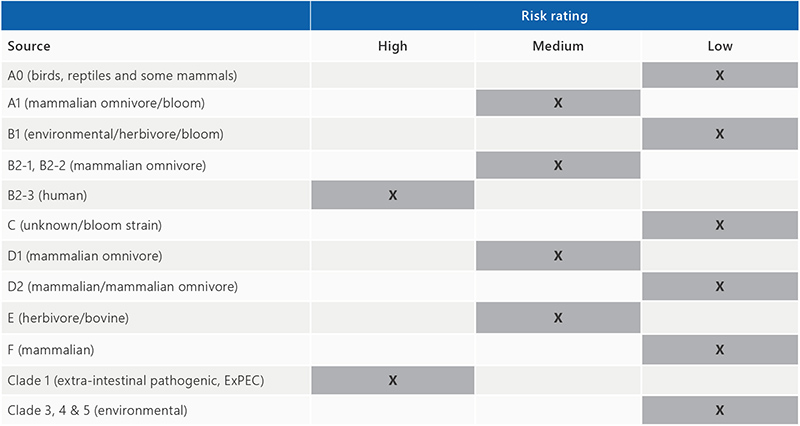Our E. coli confirmation and phylogrouping services enable us to determine if the source of contamination in a water sample is of animal or environmental origin.
While E. coli exist in the gastrointestinal tract of humans and animals, these bacteria are ecologically versatile and some strains have adapted to a variety of environmental conditions.
Routine water quality tests (e.g. Colilert) don't provide information on E. coli origin. However, this information is important when the identification of specific E. coli strains will determine the risk profile and the water treatment options used by a water utility.
Our advanced DNA based testing methods, which include E. coli phylogrouping, capsule detection and whole genome sequencing, enable us to identify specific E. coli characteristics. These can be used to determine the ecological niche and significance of any E. coli detected in source waters or distribution networks leading to fully informed risk management responses.
E. coli strains
E. coli strains can be separated into a phylogroup structure, which at present includes eight phylo-groups: A, B1, B2, C, D, E, F and cryptic clade I (Clermont et al., 2013).

The A0 phylogroup is carried by birds, reptiles, fish and some mammals.
The B1 phylogroup is predominantly environmental.
The risk of this type of E. coli to human health is low.
The B2-3 phylogroup is predominantly carried by humans. The risk of this type of E. coli to human health is high as it may indicate a human faecal contamination event and thus the potential for human infective pathogens to also be present.
The D1 phylogroup is associated with mammalian omnivores, which can include humans and other animals like pigs.
The E phylogroup is associated with herbivores and cattle. The risk of this type of E. coli to human health is medium, there is a possibility that human infective pathogens may also be present.


